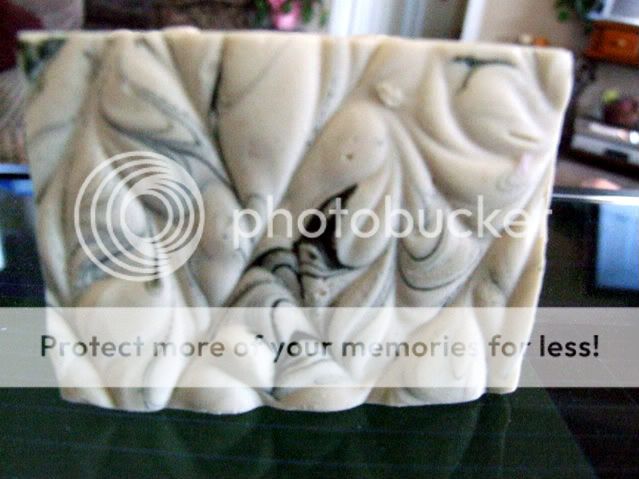If you got some volcanic action going on in the middle of your soap, then it sounds to me like your soap was gelling. Sometimes gel can be stealthy and cannot be detected by just looking at the surface of the soap. I've done colored soaps that were gelling 100%, but the colors were such that they masked what was going on underneath the surface. I could only tell they were gelling by lightly touching the soap, and it was
very soft to the touch and
very warm. If I had pressed even slightly any harder my finger would have gone clear to the bottom of the mold, it was so soft.

Re: Why you soap is harder with Crisco instead of soy oil: Crisco will make for a harder bar of soap because it has more stearic acid and palmitic acid in it compared with Soy Oil. Palmitic and stearic both contribute to hardness. Soy oil has less of both of those 2 acids.
To find out more about oils, the SoapCalc site is a great resource (soapcalc.com). It shows the acidic profile of each oil so that one can become even more proficient in formulating.
As a general rule I personally like to use about 60% hard oils/fats, and 40% soft oils/fats in my formulas for a good, balanced soap. Some of the hard oils/fats (Saturated fatty acids) are Tallow, Lard, Palm Oil, Coconut Oil, Babassu Oil, Palm Kernel Oil, Olive Oil* (see asterisk 3rd paragraph below), Cocoa Butter, Mango Butter, Illipe Butter, Kokum Butter, etc.. The hard oils are those high in Lauric Acid, Myristic Acid, Palmitic Acid, Stearic Acid. They lend long shelf life to soap.
The softer oils/fats fall into 2 catagories- monounsaturated and polyunsaturated. Monounsaturated fats that are high in oleic acid are much more stable than the polyunsaturated fats and will produce harder, more shelf stable bars than their polyunsaturated cousins.
Picture fatty acids as being 3 long boat chains that anchor a boat to a dock. You have a saturated chain, a monounsaturated chain and a polyunsaturated chain. The saturated (hard fat) chain is perfect with no chinks in it anywhere. It is strong and very stable for holding big ocean liners to a dock.
The monounsaturated chain has 1 chink in it. It's not as strong as the saturated chain, but it still holds up fairly well, nevertheless, and will hold normal sized boats to the dock with no problem. *Olive oil is monounsaturated.* Although not as strong as Mr. Saturated Chain, olive oil still has enough strength to be considered a hard and pretty stable oil among the softer oils oil because it only has 1 chink in it. Other monounsaturated oils include Almond, Canola, and the high oleic versions of Sunflower & Safflower oils.
The polyunsaturated chain on the other hand has at least 2
or more chinks in it and is not very stable or long lasting. It's much weaker and more sensitive to being buffeted by the elements. They are generally those that are high in linoleic acid and linolenic acid. Some of those oils are Grapeseed, regular Safflower Oil, Soybean Oil, regular Sunflower Oil, and Wheatgerm, etc..
In your recipe, you've got about 57% hard oils (as opposed to the at least 60% I like to shoot for), but it's really probably less than that because I don't consider Crisco to be on the higher end of the hardness scale. Palm, Lard and Tallow are much harder in comparison. If you can get a hold of any of those to add to your recipe in place of some of the Crisco, you can make for an even harder bar if you want.
Sorrry for being so long winded, but I HTH!

IrishLass



















































